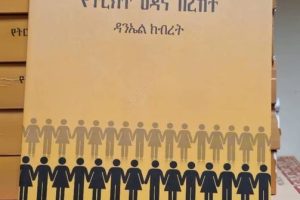
BY MESERET BEHAILU
Various literatures show that Christianity was introduced to Ethiopia in the fourth century during the Aksumite kingdom. On the other hand, the religion of Islam was introduced to Ethiopia in the late seventh century through the expansion of trade. It is believed that the two religions have been there starting from the earliest days. These religions have been building and strengthening cooperation among their followers.
Therefore, Ethiopia is the land of religiosity that has diverse cultures and citizens with a compassionate bent. The coexistence of these diverse cultures and languages, among others, has enabled the nation to portray an image of a land that embraces harmony. Therefore, exhibiting harmony has become the characteristic feature of the country. Among many religious followers, Christians and Islam have a long history of understanding each other’s concern since they lived together for long passing through thick and thin.
They shared feelings of happiness and sadness. In this regard, during the celebrations of Christmas or Epiphany holidays the Muslims equally enjoy with their Christian friends. The same is true for Christians during Eid al-Fitir or Eid al-Adha they as well enjoy the day with their Muslim brothers and sisters. These festivities have strengthened the harmonious existence of the people.
As pious people, Ethiopians pay prayers to the Almighty to see to the wellbeing of themselves, beloved ones and their motherland too. They are also thankful to God for safeguarding their family, their nation and the world from disastrous unfolding.
Similarly, the Muslim community gathers together and learns each other as seen in pic-2. Elders always remarks about Islam-means peace which is called Selam in Amharic as well. From this, we learned that Islam is a religion and Muslims are followers of peace which is the foundation of their religion. The two religions have different wearing stuff and dressing style. They may also pay prayer to the lord with different names of Jesus and Allah. However, they usually offer prayers for one thing and that is spiritual wellness.
Occasionally, the Islamic and Christians religious institutions may be situated in the neighboring residences which simply found between a fence. This situation creates exchange of teachings between the followers of the two religions since the voice of the religious leaders clearly listen beyond the fence. In addition to obtaining religious advice and education from preaches of the priest or Sheikh, both religious followers alarmed every morning by the azan or church bell.

In the first picture, the orthodox faithful present hymn as a tribute to thank the lord. During prayer they appear at the church wearing cotton-made costumes which include Netela a flat cloth to put on like a wide shawl. They have a unique style of dressing Netela by forming a cross from the right to left shoulder as symbol of the holy cross to remember the crucifixion of Jesus who sacrificed his life to give love and save all human beings from sin.
The undivided attention of believers during prayers should be on the spiritual songs or hymns and prayer. Accordingly, the church strictly forbids its followers from thinking about cunning, revenging or bad behaving all the time and especially in such occasions. It preaches its followers to develop forgiveness for every harm inflicted on them than rushing for revenge.

Such alarms inspired believers to be awakening for daily routine or to go to the church taking their children with them. As seen in picture three, children are offering prayer that they learned from their parents. Those children are highly passionate on addressing prayer keeping their eyes closed to avoid disturbing ideas or movements. They seem properly enrolled by their parents and clergies. As the teaching tell us strong believers will develop decency, wisdom and virtue.
The fourth picture shows that women are gathering around the meal table. They are serving their food while discussing issues one another. In Ethiopia, eating together, helping one another, discussing, welcoming guests seems a common practice across the country. Anyone who seat for meal, will be involved to serve together without fear, no one will disturb him from the meal serving ceremony.

The Ethiopian herald December 27/2020





